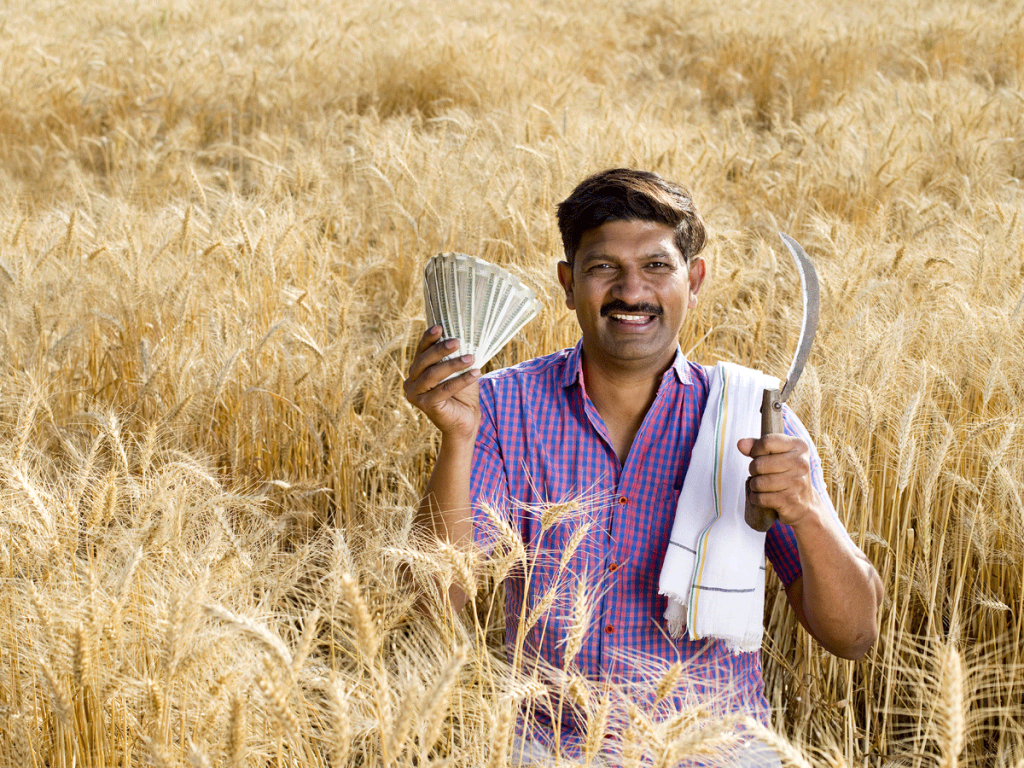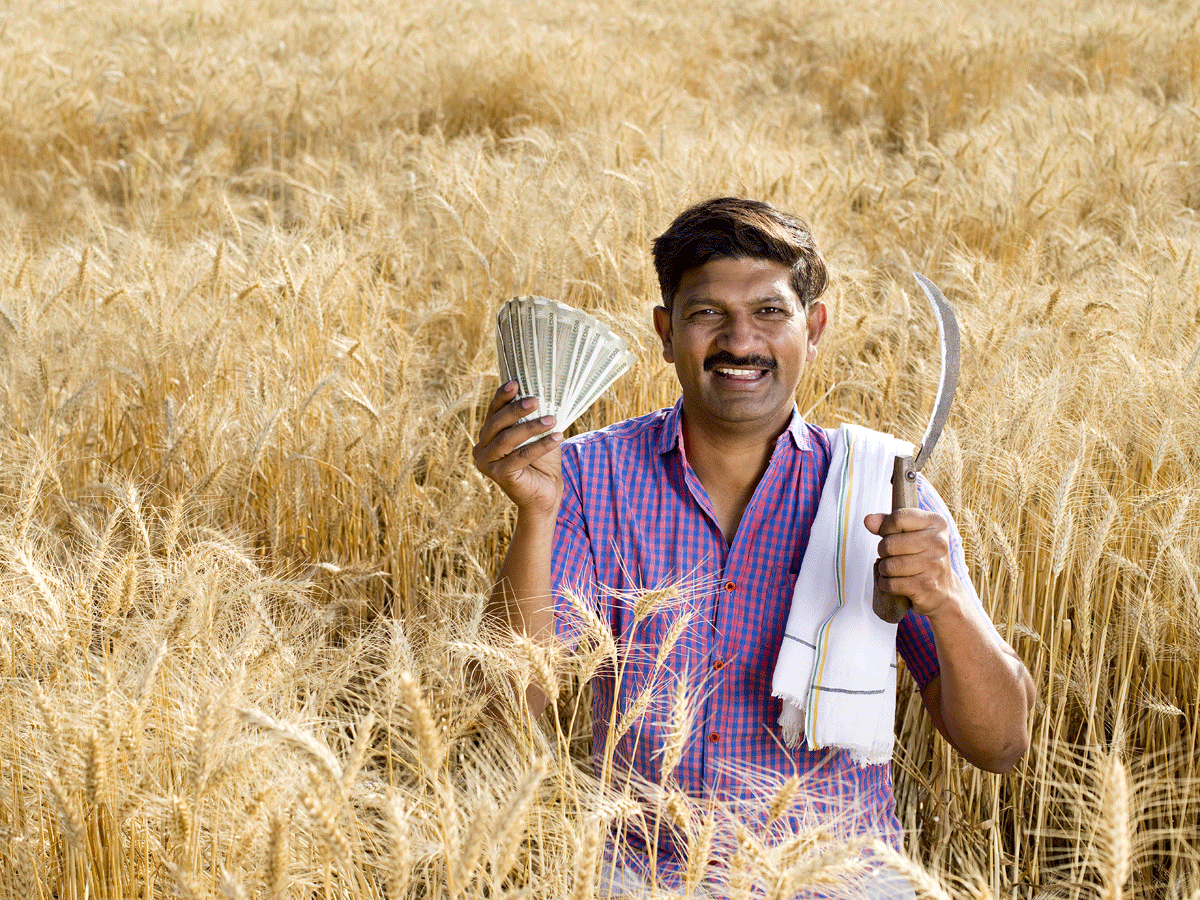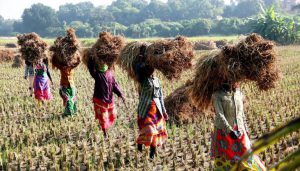Synopsis
Kisan Diwas or National Farmers’ Day is observed across the country on December 23 to honour farmers, the backbone country. The central government offers various schemes for farmers and the agricultural sector. Know all about Kisan Credit Card, Pradhan Mantri Fasal Bima Yojana, Pradhan Mantri Kisan Samman Nidhi and 3 other beneficial govt schemes for farmers.
Kisan Diwas or National Farmers’ Day is observed across the country on December 23 to honour farmers, the backbone country. It is celebrated on this day every year in honour of Chaudhary Charan Singh, a farmers’ leader who became India’s fifth prime minister.
The central government offers various schemes for farmers and the agricultural sector. Here are six schemes that the central government offers to the farmers.

1. Kisan Credit Card
In 2020, the central government launched a revised Kisan Credit Card (KCC) scheme which aims at providing adequate and timely credit support from the banking system under a single window to the farmers for their cultivation and other needs, according to PIB.
Eligibility: 1) All Farmers – individuals/joint borrowers who are owner cultivators
2) Tenant farmers, oral lessees & share croppers
3) Self-help groups (SHGs) or joint liability groups of farmers including tenant farmers, share croppers, etc.
Objective: Kisan Credit Card Scheme aims at providing adequate and timely credit support from the banking the system under a single window to the farmers for their cultivation & other needs:
a) To meet the short-term credit requirements for the cultivation of crops
b) Post-harvest expenses
c) Produce Marketing loan
d) Consumption requirements of farmer household
e) Working capital for maintenance of farm assets and activities allied to agriculture, like dairy animals, inland fishery, etc.
f) Investment credit requirement for agriculture and allied activities like pump sets, sprayers, dairy animals, etc
Features: According to PIB, here are the salient features of the Kisan Credit Card Scheme
1) It provides the facility of an ATM-enabled RuPay Card, one-time documentation, built-in cost escalation in the limit, and any number of drawals within the limit.
2) The scheme was further extended for the investment credit requirement of farmers viz. allied and non-farm activities in the year 2004.
3) KCC covers post-harvest expenses, produce marketing loans, consumption requirements of farmer households, working capital for maintenance of farm assets and activities allied to agriculture, and investment credit requirement for agriculture and allied activities.
4) The Kisan Credit Card Scheme is implemented by Commercial Banks, RRBs, small finance banks, and cooperatives.
5) Loan facility is also available
2. Pradhan Mantri Fasal Bima Yojana (PMFBY)/Restructured Weather-Based Crop Insurance Scheme (RWBCIS):
Pradhan Mantri Fasal Bima Yojana (PMFBY) & Restructured Weather Based Crop Insurance Scheme (RWBCIS) were launched 2016 to provide comprehensive crop insurance coverage from pre-sowing to post-harvest losses against non-preventable natural risks.
The scheme aims at supporting sustainable production in the agriculture sector by way of –
a) providing financial support to farmers suffering crop loss/damage arising out of unforeseen events
b) stabilizing the income of farmers to ensure their continuance in farming
c) encouraging farmers to adopt innovative and modern agricultural practices
d) ensuring flow of credit to the agriculture sector.
These schemes will contribute to food security, crop diversification and enhancing growth and competitiveness of agriculture sector besides protecting farmers from production risks, according to the ministry.
These schemes are the only risk mitigation tools available to farmers at extremely low premium rates payable by farmers at 2 per cent for Kharif crops, 1.5 per cent for Rabi Crop, and 5 per cent for annual commercial/horticultural crops. The balance of the actuarial premium is shared by the central and state governments on 50 : 50 basis, as per PIB. The schemes are voluntary for states and available in areas and crops that are notified by the state governments. Further, the schemes are compulsory for loanee farmers and voluntary for non-loanee farmers.
Over 36 crore farmer applications have been insured under Pradhan Mantri Fasal Bima Yojana, with over Rs 1,07,059 crores of claims already been paid under the scheme as of February 4, 2022, as per the Ministry of Agriculture & Farmers Welfare.
3. Pradhan Mantri Kisan Maan-Dhan Yojana (PM-KMY)
Launched in 2019, Pradhan Mantri Kisan Maan-Dhan Yojana (PM-KMY) is a voluntary and contributory pension scheme for small and marginal farmers. It was launched to ensure better income for the farmers in the country. All small and marginal farmers having cultivable land holding up to two hectares falling in the age group of 18 to 40 years, whose names appear in the land records of states/UTs as of 01.08.2019 are eligible to get benefits under the scheme, according to the FAQ released by PIB.
armers will have to contribute an amount between Rs 55 to Rs 200 per month to the pension fund, depending on their age. They have to contribute for a minimum of 20 years to be eligible for the pension at the age of 60. You can contribute to the pension for a maximum of 42 years. Under this scheme, the farmers will get a monthly pension of Rs 3,000 after attaining the age of 60 years, as per PIB.
As on January 31, 2022, a total of 21,86,918 farmers are enrolled in the scheme.
4. Pradhan Mantri Krishi Sinchayee Yojana (PMKSY)
The central government launched Pradhan Mantri Krishi Sinchayee Yojana in 2015 with to motto of ‘Har Khet Ko Paani’. The scheme was implemented to expand the cultivated area with assured irrigation, reduce wastage of water and improve water use efficiency. PMKSY not only focuses on creating sources for assured irrigation but also creates protective irrigation by harnessing rain water at the micro level through ‘Jal Sanchay’ and ‘Jal Sinchan’. Over 10 lakh ha. covered under micro-irrigation for the year 2021-22, as per the official website.
5. Pradhan Mantri Kisan Samman Nidhi (PM KISAN)
Started in 2018, Pradhan Mantri Kisan Samman Nidhi aims to provide income support to all small and marginal landholding farmer families to supplement their financial needs. Under the scheme, landholder farmer families are eligible for Rs 6,000 per annum per family payable in three equal installments, every four months. The scheme was initially meant for small and marginal farmers (SMFs) having landholding up to 2 hectares but the scope of the scheme was extended to cover all landholding farmers with effect from 01.06.2019, according to PIB.
More than Rs 2 lakh crore has been transferred to about 11.37 crore eligible farmers through this scheme till August 2022. The benefit of PM-KISAN is given only to the farmers with land holdings. A database is being created for the quick identification of eligible farmers for PM-KISAN and other schemes and farmers’ welfare schemes to be launched in the future. It will have all the information including the Aadhaar, and bank account of farmers and the land records of farmers will be linked with their records, the Ministry of Agriculture & Farmers Welfare said earlier.
6. Restoring Interest Subvention Scheme
In August 2022, the Union cabinet approved to restore interest subvention on short-term agriculture loans to 1.5 per cent for all financial institutions. “The interest subvention of 1.5 per cent will be provided to lending institutions (public sector banks, private sector banks, small finance banks, regional rural banks, cooperative banks, and computerised PACS directly ceded with commercial banks) for the financial year 2022-23 to 2024-25 for lending short term agri-loans upto Rs 3 lakh to the farmers.” PACS stands for primary agricultural credit society,” according to an official statement by the Union cabinet.
Thus, an interest subvention of 1.5 per cent will be provided to lending institutions for the financial year 2022-23 to 2024-25 for lending short-term agri-loans up to Rs 3 lakh to the farmers.
“Increase in interest subvention will ensure the sustainability of credit flow in the agriculture sector as well as ensure financial health and viability of the lending institutions especially regional rural banks and cooperative banks, ensuring adequate agriculture credit in the rural economy,” according to the Union Cabinet.
Read more at-https://bit.ly/3jlyxLu





